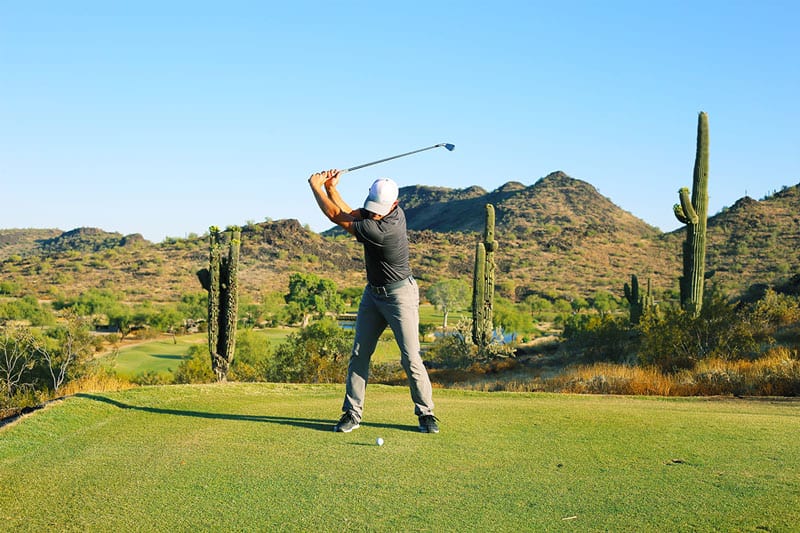by Adam Halseth PT, DPT, SCS
Every day, I see patients who question why their bodies hurt the way they do. Each of them has ideas or conspiracies about why this is the case. Usually, it involves some sort of past injury, like a herniated disc, sleeping wrong three weeks ago, or just losing flexibility over the years. Their main complaint is often that it limits their ability to golf, either with the frequency of play or ability level.
I typically ask, “What are you doing to improve it?” A classic response is some stretch combination they do before they play. As they begin to describe these stretches, I often find myself scratching my head, discreetly, of course. It is apparent that the average golfer has a severe lack of education and awareness about how to prep your body and avoid injuries.
Is your swing suffering from body pain or a limited range of motion?
To address and alleviate your aches and pains, you need to know what the root cause is. I said, causing the pain, not where you feel the pain. When golfers come to see me with lower back pain, rarely is it the case that the lower back causes the pain. Most of the time, you feel the pain because you are compensating in that area. You compensate because you lack in another area of your body. Take the golfer with back pain; they typically have a rotational limitation in the hips, mid-back, or even the shoulders. This forces them to move their lower back in a way that it is not meant to do, causing lower back pain. You will never cure the lower back pain until you improve the hip, mid-back, or shoulder limitation.
Measuring and Increasing Range of Motion to impact the ability to golf
It can become tough to know exactly what will make you better. This is why I do what I do. I assess my patient’s abilities from a movement perspective and can give them precisely what they need to improve. I think of it as a “sniper” effect. You could do ten different exercises or stretches; maybe 2 of them will work (shotgun approach). Or learn precisely what your body can and cannot do with the help of a professional. Knowing what is working and focusing on those areas will speed recovery and increase your range of motion. And improve your game.
Below are three exercises you can do at home to address the most common limitations I see: mid-back mobility and hip mobility limitations. These exercises are safe and will start providing immediate benefits in your ability to golf. If you are interested in improving your rotational power, flexibility, and strength and decreasing your pain, you need to get a detailed assessment and learn exactly what you need to improve.
To watch more videos, visit our YouTube channel. If you’re experiencing lower back pain, we offer free injury assessments at our valley-wide locations. Request an appointment today or give us a call at 480.289.5502.
About The Author Adam Halseth, PT, DPT, SCS
Adam is the Education Chair for the American Physical Therapy Association (APTA) golf special interest group. As a result of his Titleist Performance Institute (“TPI”) Medical Level III certification, interactions with top medical and fitness providers in the golf industry, and numerous other training, Adam has developed an in-depth understanding of specific golf training modalities. He is a board-certified Sports Clinical Specialist specializing in sports medicine and orthopedic physical therapy. Adam is passionate about working with all orthopedic and sports medicine conditions. Adam and his team work with professional athletes, adolescents to older adults, those preparing for or recovering from surgery, and anyone needing to overcome pain and injury.




